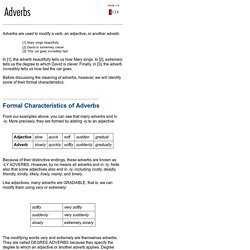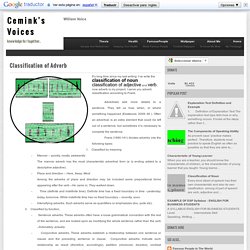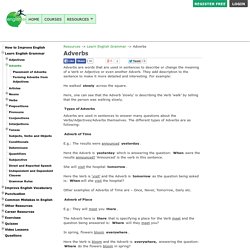

Adverbs of frequency in English. Myenglishteacher. What is an adverb of frequency? Adverb of frequency is a word that tells us how frequently or how often something happens. I always eat breakfast in the morning, even when I am late for work. 1. List of the most common adverbs of frequency: alwaysusuallysometimesneveroccasionallyrarelyseldomfrequentlyoftenregularlyhardly ever Share this Image On Your Site <p><strong>Please include attribution to MyEnglishTeacher.eu with this graphic. 2.
A) We usually put the adverbs of frequency in the middle of the sentence, between the subject and the verb, but after auxiliary verbs: I often go to the beach.He sometimes visits his grandma.They usually drink coffee in the mornings.I hardly ever help my mom in the kitchen. b) Auxiliary verbs: He is usually very happy.We are always helping the children at school.I have never done anything bad.She is always cooking pasta.
NOTE: the verbs have, has, and had are auxiliary verbs only when used with past participle: Read more:English Adverbs of Quantity (List)! Interactive Activities – Frequency Adverbs: position –[Multimedia-English] Adverbs : Position in a sentence-English. Adverbs Page 1. Adverbs are used to modify a verb, an adjective, or another adverb: [1] Mary sings beautifully [2] David is extremely clever [3] This car goes incredibly fast In [1], the adverb beautifully tells us how Mary sings.

In [2], extremely tells us the degree to which David is clever. Finally, in [3], the adverb incredibly tells us how fast the car goes. Before discussing the meaning of adverbs, however, we will identify some of their formal characteristics. Formal Characteristics of Adverbs From our examples above, you can see that many adverbs end in -ly. Because of their distinctive endings, these adverbs are known as -LY ADVERBS. Like adjectives, many adverbs are GRADABLE, that is, we can modify them using very or extremely: The modifying words very and extremely are themselves adverbs.
Like adjectives, too, some adverbs can take COMPARATIVE and SUPERLATIVE forms, with -er and -est: In the formation of comparatives and superlatives, some adverbs are irregular: Adverbs and Adjectives. Classification of Adverb - Cemink's Voices. It’s long time since my last writing.

I’ve write the classification of noun , classification of adjective and verb. now adverb is my project. I serve you adverb classification according to Frank. Adverbials add more details to a sentence. They tell us how, when, or where something happened (Eastwood, 2009: 46 ). Often an adverbial is an extra element that could be left out of a sentence, but sometimes it is necessary to complete the sentence. 1. Types of Adverbs. Advpgs%202-3.pdf. 语法课程第十一单元. Comparative and Superlative of Adverbs. Adverbs:Big List of Adverbs and its types:Learn What are Adverbs? Adverbs are words that are used in sentences to describe or change the meaning of a Verb or Adjective or even another Adverb.

They add description to the sentence to make it more detailed and interesting. For example: He walked slowly across the square. Here, one can see that the Adverb ‘slowly’ is describing the Verb ‘walk’ by telling that the person was walking slowly. Types of Adverbs Adverbs are used in sentences to answer many questions about the Verbs/Adjectives/Adverbs themselves. Adverb of Time E.g.: The results were announced yesterday. Here the Adverb is yesterday which is answering the question: When were the results announced?
She will visit the hospital tomorrow. Here the Verb is ‘visit’ and the Adverb is tomorrow as the question being asked is: Whenwill she visit the hospital? Other examples of Adverbs of Time are – Once, Never, Tomorrow, Daily etc. Adverb of Place E.g.: They will meet you there. In spring, flowers bloom everywhere. Adverb of Manner E.g.: He quietly slipped away.